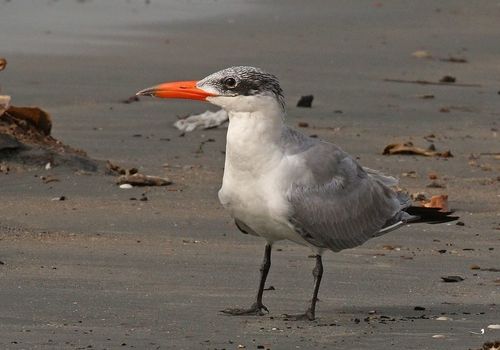
Caspian tern
Sterna caspiaCaspian tern
Introduction: Caspian terns (Sterna caspia) are found mostly on the coast in bays and estuaries but also inland at large water bodies such as lakes and pans.
Distribution: Most Namibian coastal areas including Luderitz, Walvis Bay and Swakopmund, Skeleton Coast and the Kunene River estuary. Observed at Hardap Dam, Etosha National Park and the Caprivi.
Diet: Forages in clean, shallow water for fish, swallowed head first.
Description: Often confused with the smaller Royal tern.
Breeding: Both male and female make a nest of a shallow scrape in sand or gravel, pebbles or soil and lined with vegetation between December and March. Usually 2 eggs are laid, incubated for a period of around 22 days. Domestic dogs and Black-backed jackals are the main egg predators.
Size: 50cm.
Weight: 690g.
Wingspan: 140cm.
Klein Windhoek

